Exposé Reveals Sick, Injured, Stressed Greyhounds Imprisoned and Bled Repeatedly at Hemopet
Update (March 26, 2024): Victory! Hemopet—the captive-canine blood bank in California that warehoused approximately 200 greyhounds in tiny crates and barren kennels to sell their blood to veterinary clinics—has closed its doors, and the remaining dogs will reportedly be adopted. This good news comes after PETA fought hard for a landmark law in the state to phase out the operation of Hemopet and other businesses that keep dogs perpetually caged for their blood and to allow healthy canine companions already in loving homes to be volunteered for occasional, safe blood collection instead.
Original post:
A PETA eyewitness investigation of Hemopet—a canine blood “bank” in Garden Grove, California—found that this so-called “rescue” warehouses approximately 200 greyhounds bred for and discarded by the greyhound racing industry in tiny crates and barren kennels for about 23 hours out of every day—even when they were sick or injured in fights with stressed kennelmates—and boasts that it sells their blood to over 2,000 veterinary clinics in North America and Asia.

Barren Enclosures, No Space to Move Around
Hemopet kept many of the greyhounds in barren, rusty kennels. Others were locked in crates so small that they could barely turn around or even stand up or stretch, and could hardly even see any other dogs.
These greyhounds—who, like all dogs, were eager to run and play and longed for companionship—were taken out of their cages only to be bled, walked briefly, or put into barren concrete-floored pens for a few minutes. Dr. Emma Milne, a veterinarian who reviewed the footage, said, “The length of time they are spending in the cages is completely unacceptable, especially given the size and nature of the cages. Dogs are social animals with complex behavioural and social needs. These welfare needs are not being met at all in this environment” [emphasis in original].

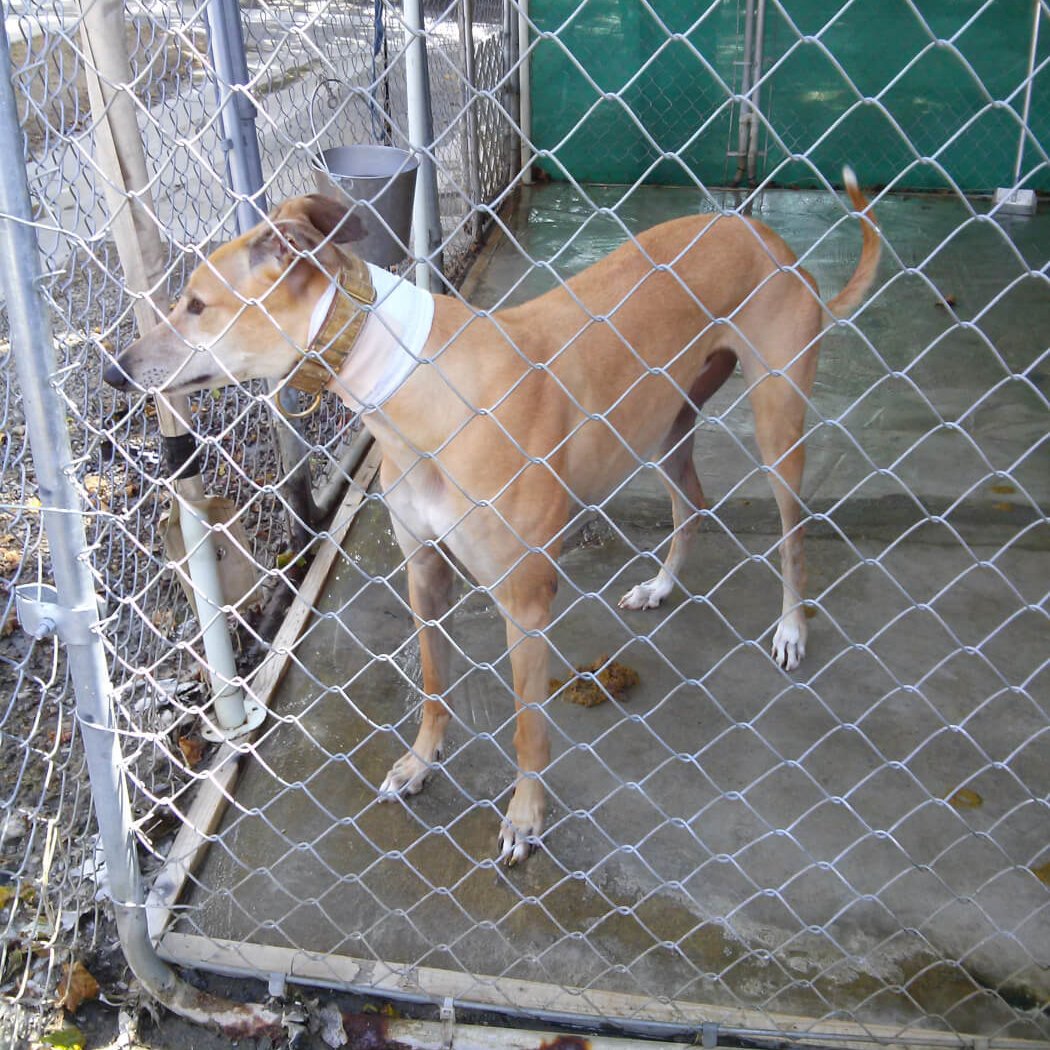
Tails Severed and 'Dangling by a Little Nerve'
If you’ve ever donated blood, you probably sat on a cushioned chair and enjoyed some orange juice before heading home. But at Hemopet, greyhounds—who are intelligent, gentle, active dogs—were confined for about 23 hours a day, every day, on hard surfaces for months or even years. This perpetual imprisonment caused them to suffer from hair loss, calluses, and pockets of accumulated fluid under the skin.
Genie was missing hair and had red, irritated skin on her leg. An employee said that she would “probably always have it.” Dr. Christine Capaldo, a veterinarian, said, “In my professional assessment, the high number of dogs with areas of hair loss and callused skin is indicative that the dogs are chronically suffering from long-term excessive confinement, with limited opportunity for mobility and activity necessary for optimal health and welfare” [emphasis added].
Several dogs, desperate for attention and a respite from their near-constant confinement, sustained serious injuries when they wagged their tails enthusiastically against the metal wire of the enclosure. These injuries were sometimes so severe that they led to amputation, leaving dogs with just a “stub” of a tail. Staff said that it was “very common” for dogs’ tails to be injured. One staffer said that a Hemopet employee had broken a dog’s tail by shutting it in the kennel door, and that it was “dangling by a little nerve … just a string.” Another staffer said that a coworker approached her with a dog’s severed tail in his hand after a volunteer had shut the dog’s tail in a door, immediately severing it.
Other dogs tore their nails or cut their paw pads on the metal cages. One dog, Siesta, repeatedly broke her overgrown nails, causing her to bleed and limp in pain.
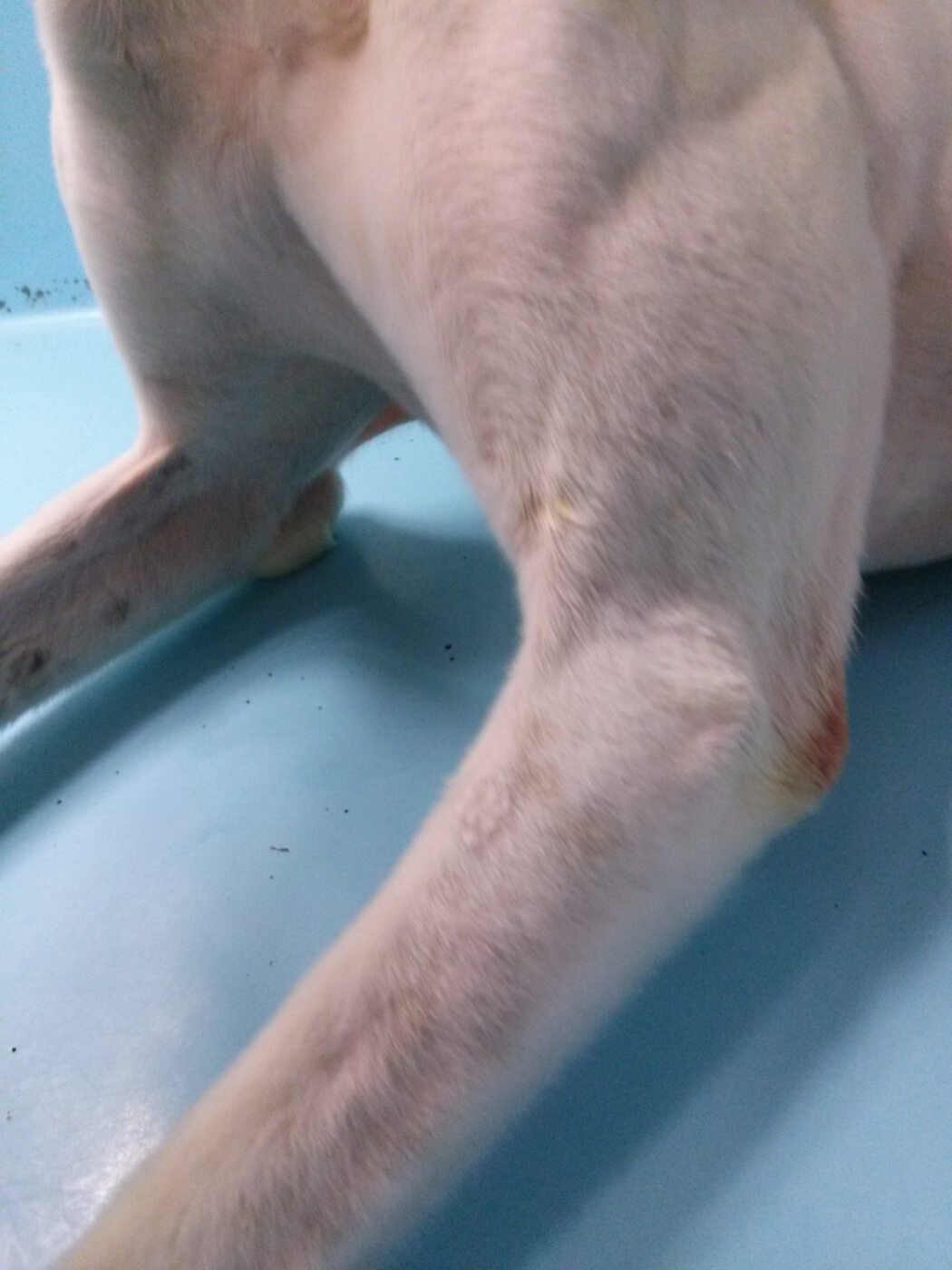

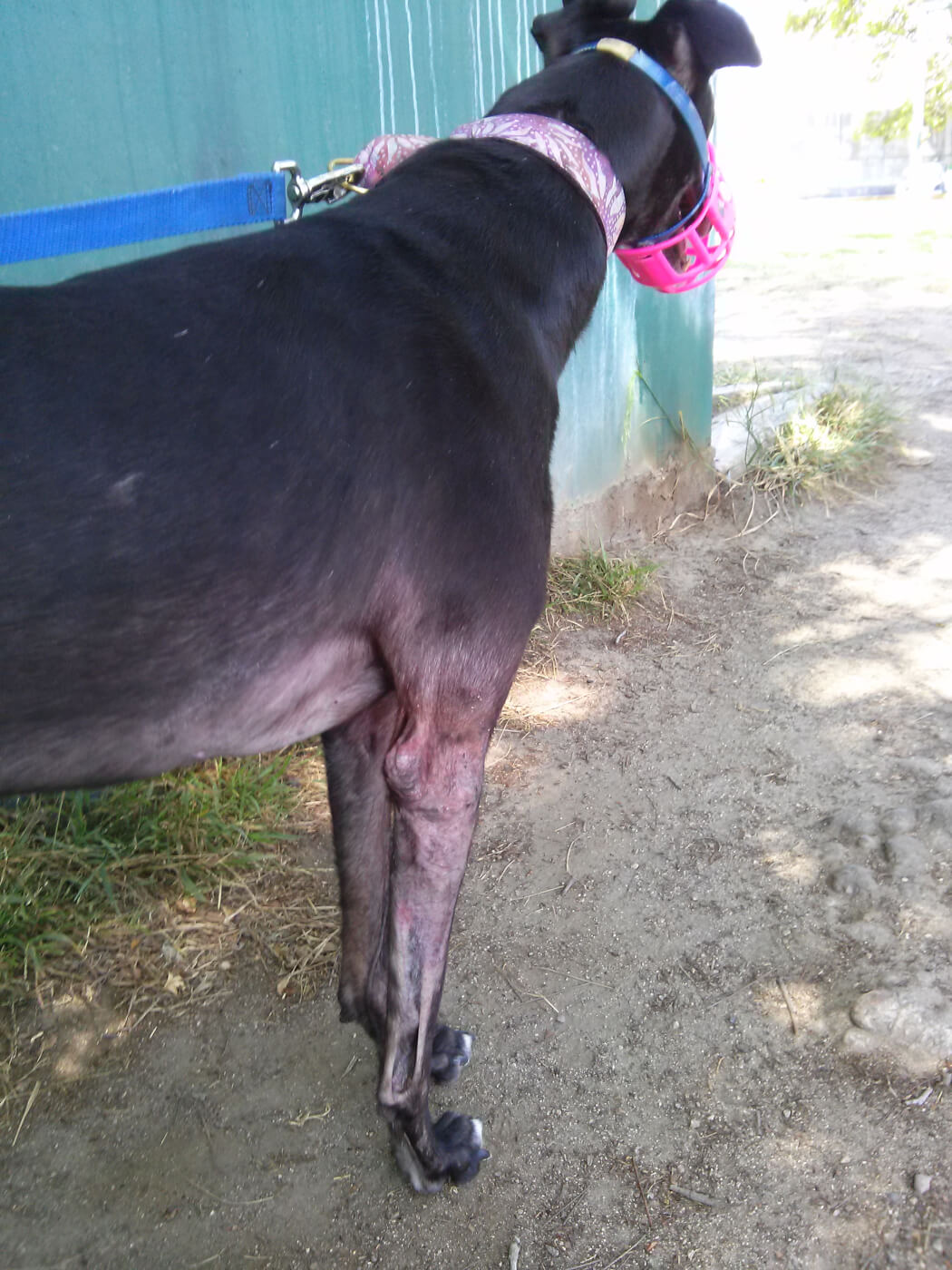
Dogs 'Pay Rent' in Blood
Workers took the dogs’ blood every 10 to 14 days. This exhausting cycle went on for 18 months or even longer, according to Hemopet staff. One employee said that workers even took blood from dogs with borderline anemia, a severe deficiency of the red blood cells needed to carry oxygen throughout the body, which is what critically ill or injured dogs often require when they receive blood.
The eyewitness even found that Hemopet continued to collect dogs’ blood for several weeks after they had been approved for adoption—even though their new families were eagerly waiting for them—until newly arrived dogs took their place in the blood-drawing queue. One staffer said that the dogs, who obviously did not choose to live at Hemopet, “pay rent” with their blood.


Stressed Dogs, Frequent Fights
Being deprived of exercise, companionship, and stimulation caused these dogs tremendous mental distress, which led some to turn in frantic circles, paw desperately at their cage doors, and try to jump up even while inside the small crates. The frustrated dogs barked and howled ceaselessly, leaving them all with no escape from the noise, which added to their chronic stress. Hemopet staff only made matters worse by yelling, “Shut up!” or “Quiet!” at the agitated dogs. The dogs’ stress was so chronic that many of them suffered from diarrhea and loose stools.
Employees said that stressed dogs sometimes fought at night, resulting in torn ears, neck wounds, and bloody cages. Some dogs were caged together even after fighting. One staffer said that she’d seen “some pretty gnarly neck injuries” at Hemopet, and another employee said that her hands were “covered with blood” when an agitated dog bit off part of another dog’s ear.
One dog, Glory, was bitten on the back by her stressed kennelmate. After her wound healed, the kennel supervisor put her back in the pen with the dog who had bitten her—despite a warning by another staff member that they were not a good match—with instructions to keep the two dogs muzzled and deny them toys. Another dog, Pidgeon, was apparently attacked by her kennelmate, resulting in gashes on her neck that required stitches. And still another dog, Melyn, required sutures on her chin after her kennelmate bit her, but staff reportedly went home for the night, leaving the open wound untreated until the next day.
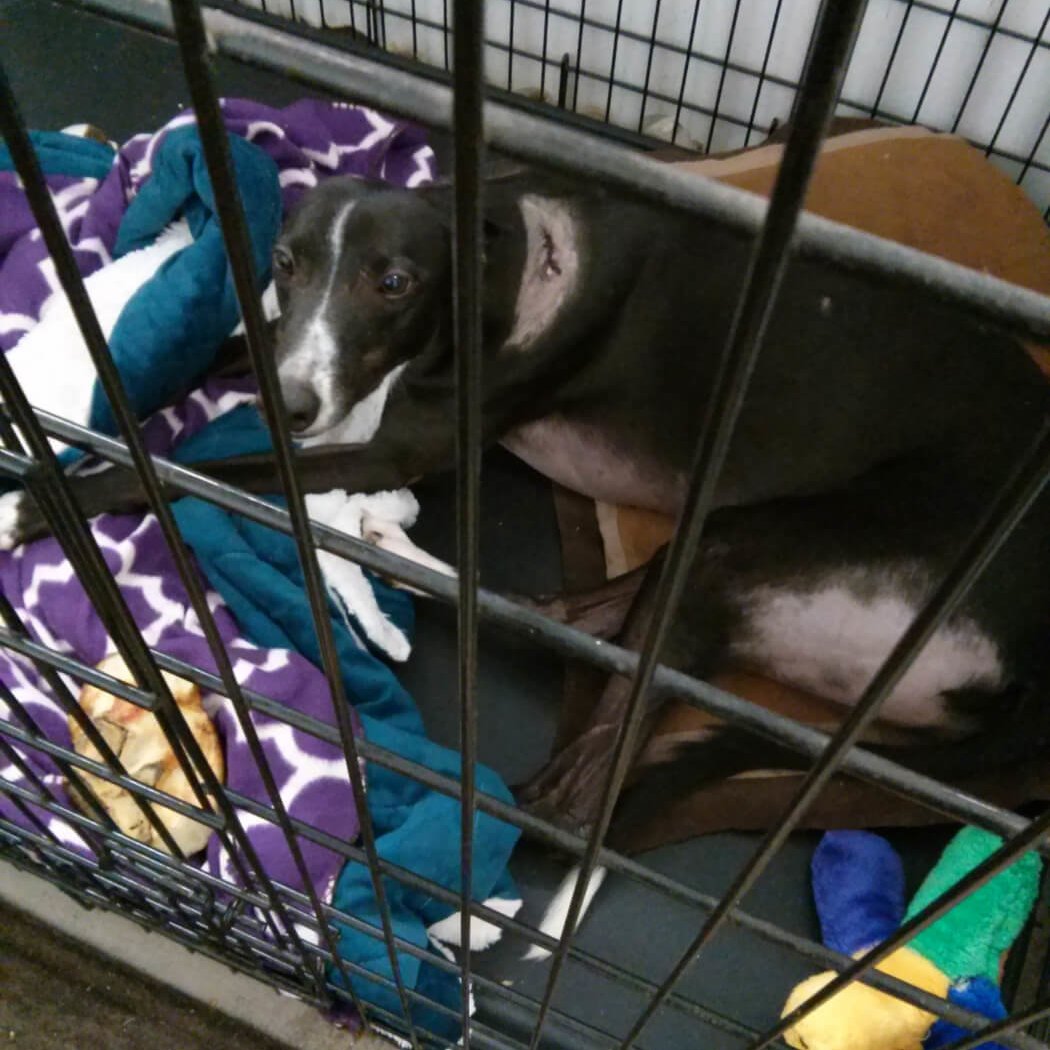
Sick Dogs Deprived of Adequate Care
One dog, Gibbs, reportedly had a neurological disorder that often originates with tumors in the chest. He quickly became lethargic and barely responded to his own name. His eyes appeared sunken, cloudy, and unfocused. A much-needed veterinary appointment was never made for him, according to Hemopet staff. He was left crated for weeks until a worker found blood in his water bowl. According to workers, an X-ray finally revealed that he had a large mass on or near his lungs so his suffering was finally brought to an end.
Staff housed two dogs who were prone to seizures in small, unpadded metal crates amid loud noises, and left them unattended overnight, even though one of the dogs, Puppet, had evidently injured himself during a seizure. A staffer said that the other dog, Val—who was reportedly returned to the facility by his adopter because of his seizures—needed a brain scan but that Hemopet founder Dr. Jean Dodds “doesn’t believe in neurology and brain scans.” The staffer said that Val “could be in a lot of pain and no one would know.”
One dog, WendyLu, had red, peeling skin on her nose. Staff speculated that she had lupus but said that no tests had ever been run to diagnose her. Dogs with lupus can have a low platelet count, but her blood was taken for sale anyway, even though it may not have contained all the components that dogs who are given blood transfusions urgently need. Workers said that another dog, Lennon, who had similar symptoms as well as an apparent rash all over his body, also had lupus. They took his blood, too, even though a staffer said that “lupus is an autoimmune disease … they probably shouldn’t donate.”
Another dog, Bunny, had a cough that had apparently persisted for over a year. Her blood was taken for sale anyway. Workers also drew blood from Varnish, who was reportedly blind in one eye, even though a staffer said that the eye caused him pain. Other dogs reportedly had hookworm—a parasite that can cause bloody stools, weight loss, and anemia—which a staffer said the dogs got infected with by stepping in the piles of feces left in pens outside that kennel workers failed to pick up.
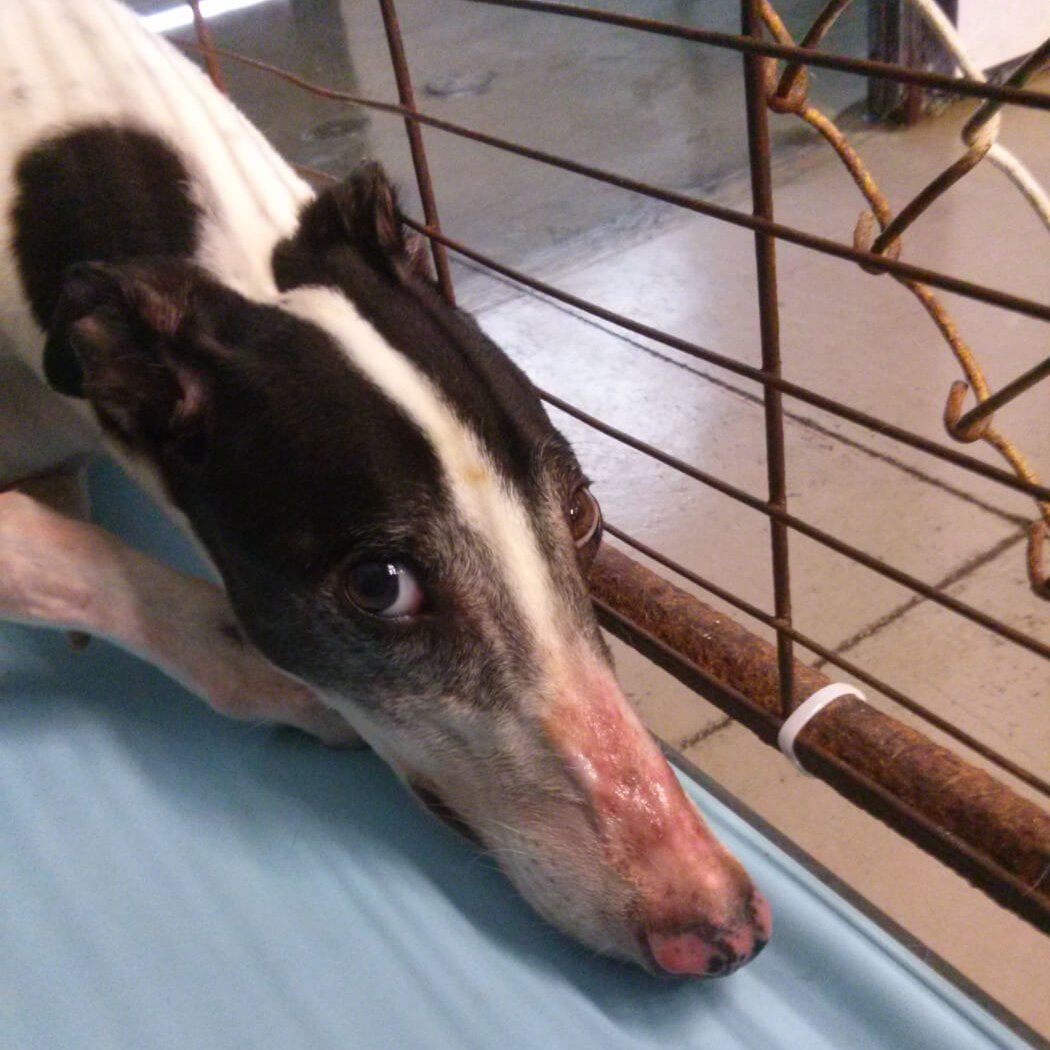
Exploited Twice Over
Records linked to the dogs’ tattooed identification numbers showed that Hemopet acquired them from Florida racetracks and Kansas breeders. The facility also obtained dogs used for racing by Lonnie Boyle, who was fined after eight greyhounds died of suspected heatstroke as he hauled them across the country. Some dogs arrived at the facility with leg and foot injuries from the racetrack, while others who arrived from Florida developed inflamed “hotspots.”
In the wake of PETA’s exposé of The Pet Blood Bank, Inc., in Texas, the National Greyhound Association (NGA) claimed to have barred its members from directly sending greyhounds to any blood bank operation. So how did Becka and Choice, who were bred and raced by NGA Board of Directors president Julia Ward, end up at Hemopet?

Jean Dodds, 'Grandmother' of Imprisoning Dogs for Blood?
All this and more takes place at a business founded by Jean Dodds, who—although referring to herself as the benign “grandmother of blood-banking for animals”—once worked on an experiment in which cobra venom was injected into guinea pigs. Despite taking in over $1 million in blood product sales in 2016 alone from the dogs it obtains and bleeds, Hemopet keeps dogs in these substandard, desolate conditions. Meanwhile, Dodds reportedly spends much of her time in Venice, Italy, and one staffer said it would take her a week to respond to a question about the greyhounds’ health from there. Another employee said that Dodds rarely visits the greyhounds, and the eyewitness only saw her once in almost three months of volunteering—when a film crew was there to interview her.
And believe it or not, Hemopet is registered as a nonprofit even as it rakes in the cash from the blood of the dogs it claims to “rescue.” This means the donations the company collects to keep dogs in barren enclosures are tax-deductible.
What You Can Do
None of these dogs’ suffering, stress, or deprivation is necessary. Many veterinary clinics help save sick and injured dogs’ lives by working with dog guardians who are willing to volunteer their large, calm, healthy dogs for blood draws. These dogs get to go home to their comfortable lives afterward.
According to Dr. Linnaea Scott, a veterinarian with over 10 years of experience in emergency medicine, “In the case of a shortage, we find another way to help the anemic patient. We get the blood from the clients’ other Labrador, from the veterinary technician’s 80-lb. Rottweiler, or from any number of large dogs who will probably never donate ever again. … Veterinarians are resourceful and we will find another way” to obtain blood for transfusions besides relying on dogs kept captive at blood banks [emphasis added].
Dr. Nicholas Dodman, canine behaviorist and professor emeritus at Tufts University’s Cummings School of Veterinary Medicine, wrote, “These conditions … remind me of how farmed animals are intensively confined to produce meat, milk and eggs. To keep a dog lying in a crate, or muzzled in a kennel, with such limited space in prison-like conditions for 23 hours each day is unacceptable. … Animals donating blood should be kept in homes, not cages” [emphasis added].
Please, urge your veterinarian not to purchase blood from dogs kept captive and to obtain blood only from dogs who get to live as all dogs should—in homes with loving families.
Please urge the NGA to bar its members’ dogs from being held captive in blood banks—including those operated by purported “rescues”—effective immediately. While the NGA claims to have barred its members from directly sending greyhounds to any blood bank operation, members can apparently still send dogs to sham “rescues” like Hemopet and others that leave the dogs in these canine prisons. Demand that the NGA take immediate and decisive action to remove all dog blood donor colonies from its list of acceptable facilities.
Please send polite comments to:
Jim Gartland
Executive Director
National Greyhound Association
[email protected]
